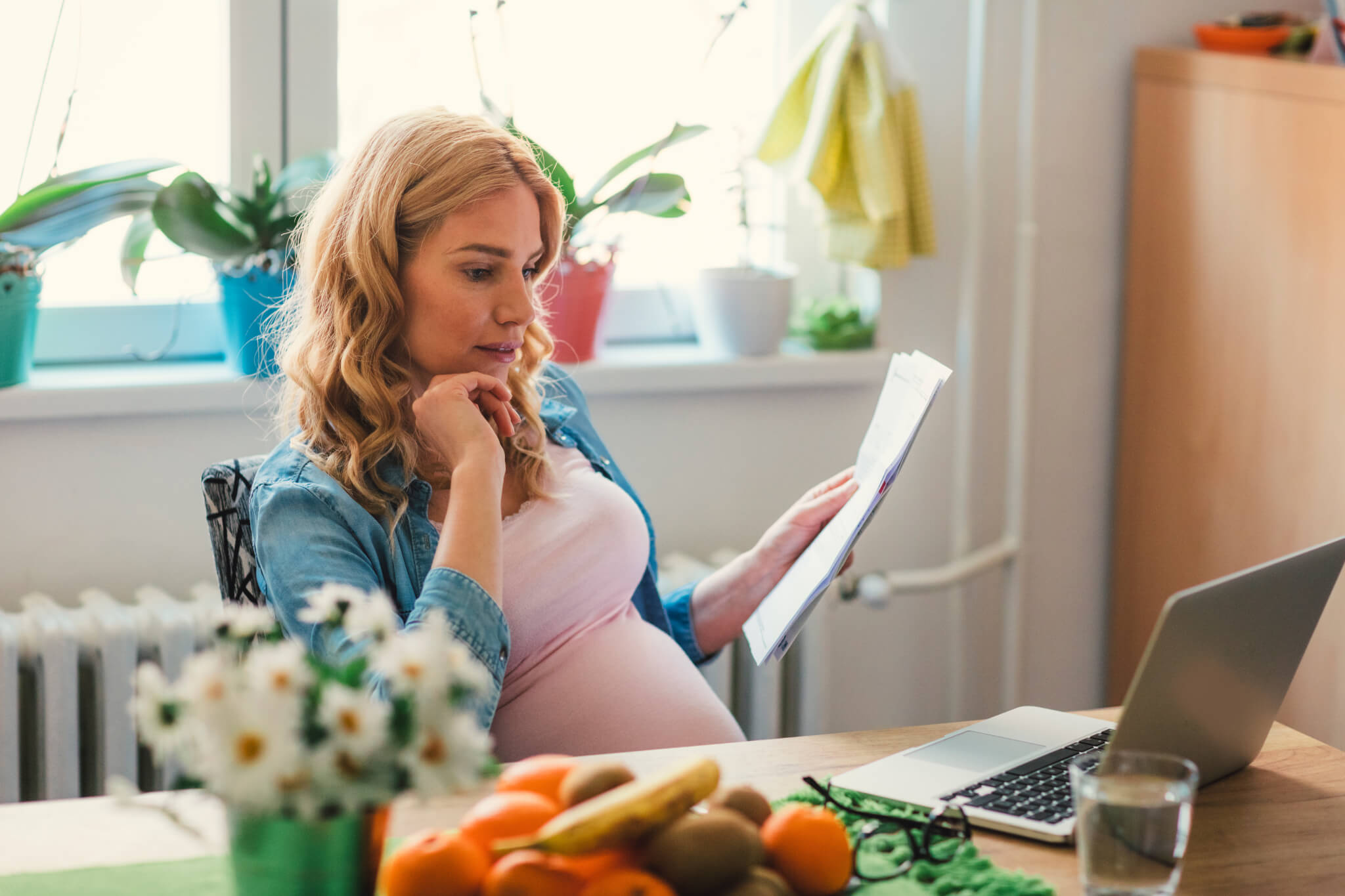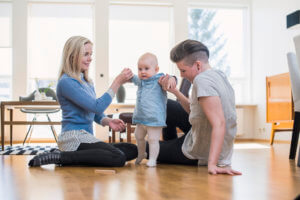For many women, parenting a child is simply not an option – maybe they are financially limited, in the middle of their education, or they simply do not see themselves ever becoming parents. Unfortunately, these women can still find themselves with an unplanned pregnancy. If you have found yourself in this situation, you must decide between two options: adoption or abortion.
Choosing between adoption or abortion is probably the hardest decision you will ever have to make in your life, and you may have no idea what to do. As you begin to weigh your options, remember that you are not the first person to have to make this decision, and you have a great deal of information and resources to help you along the way.
At this time of your life, your first step should be educating yourself about both of your options so you know what to expect. This article is meant to help you make your decision by providing you with facts, statistics, and common perspectives of the women who choose adoption or abortion.
The Facts: Adoption vs. Abortion Information
When you are dealing with an unplanned pregnancy, you are the only one who can determine the best course of action. Choosing between adoption and abortion is an incredibly personal decision, but it can also be helpful to understand the facts surrounding both options. Here, you can find some information to help you better understand adoption and abortion.
Abortion Information and Statistics
An abortion is a clinical intervention that terminates a pregnancy medically or surgically.
A medical abortion is obtained through the use of a pill. This option is meant to be taken earlier in a pregnancy than a surgical abortion, usually around 8 weeks or before. In a surgical abortion, a doctor will use a tool to end the pregnancy by emptying the uterus. This option is usually taken up to 14 weeks into your pregnancy.
Both medical and surgical abortions are safe and legal procedures, and they will not affect your ability to have children in the future. Some possible side effects can include inflammation, bleeding, or damage to the internal organs.
In most cases, you do not need consent from anyone else to obtain an abortion; the only exception being if you are a minor in certain states. If you are under 18 and unsure of your state’s laws for parental involvement, visit Planned Parenthood for more information.
In order to reduce the risk of medical complications and to avoid conflict with your state’s abortion laws, it is recommended that you obtain an abortion as early in your pregnancy as you feel comfortable.
Below, you can find more facts and statistics about abortion, which you can find at the Guttmacher Institute:
- While abortion is a generally safe option, the risk of complications increases with the duration of your pregnancy. Prior to eight weeks, the risk of death is one in one million; after 21 weeks, it is one in 11,000.
- About 18% of abortions are obtained by teenagers, and over half are obtained by women in their twenties.
- In 61% of cases, the women obtaining abortions already have at least one child.
Adoption Information and Statistics
For a woman in your position, adoption is the placement of your child into an adoptive family of your choosing. Over the course of your pregnancy, you will select and get to know a family, and when the baby is born, you will give written consent to the adoption, and the family will become the child’s legal parents.
If you decide to pursue adoption, you must also consider the different types of adoption. There are three kinds of adoption relationships: open, semi-open, and closed. In an open adoption, you will have full and ongoing contact with the adoptive family and the baby, and you will exchange identifying information. On the other end of the spectrum, a closed adoption involves no contact and no exchange of information. The most common adoption relationship is semi-open, which falls in the middle of the two.
The following list will give you even more information about adoption:
- Although most adoptions were closed in the past, this has changed over the years. In today’s adoptions, most children grow up knowing their birth parents. This kind of relationship is believed to be the most beneficial.
- It is estimated that about 18,000 domestic infant adoptions take place every year.
- Despite the belief that birth mothers are mostly unwed teenagers, women who pursue adoption are of widely varying ages, races, and levels of education.
The Opinions: Why Women Choose Adoption or Abortion
Women who choose adoption and women who choose abortion have one thing in common: they have decided not to parent.
More often than not, these women also have similar reasons for their decisions. They will not have to parent before they are ready. They can continue with their education or careers. They can ensure financial stability. While there are many similarities in the decisions of adoption and abortion, there are also some greatly differing effects, consequences, and motivations on each side.
As you make your decision, you will want to learn as much as you can about the perceptions – and misconceptions – about adoption vs. abortion.
Myths about Abortion or Adoption
Sometimes, a woman makes a decision based on something she believes to be true when the facts state otherwise. Some common misconceptions about abortion or adoption include:
- Abortion is cheaper than adoption
- The baby will go into foster care
- Abortion is a risky medical procedure
Even when you have all of the facts about abortion and adoption, the decision is never a black-and-white matter. As you make your choice, you must also consider all of the subjective reasons that one option may be better for you than another.
Why Abortion is “Better” than Adoption
Women in your position may ultimately decide that abortion is the right choice for them for some of these reasons:
“Abortion will let me ‘undo’ my unplanned pregnancy.”
Women who choose abortion may have stronger feelings of grief and loss than women who choose adoption, and it can be difficult to gain closure for those feelings. While an abortion may seem like a way to go back to a time before an unplanned pregnancy, you can never fully go back to your life “like it never happened.”
“My baby might have health problems.”
For many reasons, an unborn child could be at risk for a number of health concerns, and this may drive women to view abortion as the best – or only – option. In truth, there are many adoptive families who are ready and willing to care for children with complex medical needs. Regardless of your situation, you do still have adoption as an option.
“Adoption is not an alternative to abortion.”
While adoption is an alternative to abortion for many people, the two are not completely interchangeable. Many of the women who choose abortion do so because of the effects of pregnancy and childbirth – which birth mothers still experience. If a woman does not want others to know about her pregnancy, or she does not want to face the physical effects of that pregnancy, then she may not view adoption as a viable alternative. While plenty of women may view adoption as an alternative, this is not true of everyone.
Why Adoption is “Better” than Abortion
Here, you can read some of the reasons why a woman may decide on adoption instead of abortion:
“Adoption will let me see my baby grow up.”
Adoption and abortion are both emotionally difficult decisions for a woman, and in either case, she is likely to occasionally feel some sadness for the child she could not parent. Many women may choose adoption because seeing their child raised in a happy, loving home can alleviate that sadness. Moreover, with the increasing openness of adoptions, birth mothers can have a meaningful relationship with their children.
“I can help a family who can’t have kids.”
Many women decide to view their unplanned pregnancy as an opportunity to give the gift of a child to another family. Countless hopeful parents are struggling with infertility, and adoption allows their dream of starting a family to become a reality. Not only to many birth mothers feel glad to have helped these families, but they are reassured in knowing that their child is with people who are completely devoted to being parents.
“Adoption is an alternative to abortion.”
Oftentimes, adoption is presented as an alternative to abortion, and this makes sense – both options allow a woman to return to her previous life rather than parent before she is ready. Furthermore, many women cannot parent a child, but they also cannot or will not obtain an abortion for religious or personal reasons. For these women, adoption is indeed an invaluable alternative to abortion.
Abortion or Adoption: Your Pregnancy, Your Choice
Adoption or abortion is not a matter of good versus bad or right versus wrong. It is only a matter of what is best for you. You may hear opinions from your loved ones, the father of your child, or even people you don’t know, but the next steps you take impact you more than anyone else. Whether you choose adoption or abortion, your decision should be informed, carefully considered, and – more importantly – yours.












![Do you Get Money for Putting a Baby up for Adoption? [5 FAQs] Do you Get Money for Putting a Baby up for Adoption? [5 FAQs]](https://adoption-for-my-baby.com/wp-content/uploads/2023/02/Put-Baby-up-AFMB-300x200.jpg)

